Sevilla was a last minute add-on to my journey through Southern Europe last summer. After being awestruck by the romantic vibe of Córdoba, I was excited to see more of Andalucía. Sevilla is the capital and largest city of the historical region with a population of just under 700,000.
Sevilla holds the record for the hottest city in Europe with a record of 50° C. Last year’s summer was no different, and I wondered again and again why on earth I’d chosen to travel in this region during the summer. Not only because of the temperatures, but also because of the amount of tourists. Sevilla is crazy popular. But it’s no wonder. The city is gorgeous and it’s full of interesting history, impressive architecture and enticing cultural traditions.
Flamenco on the streets
Maybe the best-known cultural tradition (that doesn’t involve animal cruelty) is flamenco, an art form based on folkloric music traditions with guitar playing, singing and dancing. Sevilla is THE place to go to see flamenco, and it isn’t hard to find.
I had just checked into my hostel in the city center, and gone out to find some dinner when I heard the distinctive music. I followed the sound and soon found a crowd surrounding three young dancers, a guitarist and a singer. I watched the show for a while and couldn’t help but feel a little emotional. I know this wasn’t “real’ professional flamenco but I didn’t have the budget to pay big bucks to see a show, and the most important thing is the passion for the art – and these girls definitely had passion!


Real Alcázar de Sevilla
The next morning, I woke up fresh and ready to see what Sevilla has to offer other than its brilliant flamenco scene.
The old town, which is an area of just 4 square kilometers, contains no less than three UNESCO World Heritage Sites, the Alcázar palace complex, the cathedral and the General Archive of the Indies. The Alcázar is where I headed first.
The palace was built for the Christian king Peter of Castile in the 14th century on the site of a 10th century Moorish fort which was destroyed after the Christian conquest of the city. The upper storeys of the palace are still used by the royal family when they visit Sevilla, making it one of the oldest palaces in Europe still in use.
Quite as expected, there was a long queue when I arrived, but it went quite fast. And it was well worth it too, because the palace is absolutely gorgeous. The architecture is outstanding and features Mudéjar, Gothic, Renaissance and Romanesque elements from different stages of construction.
But the real highlight of the Alcázar is the gardens, complete with peacocks! It’s a wonderful place to take a break, something I needed after making it out of the palace that was packed with tourists. That’s something I don’t miss about the pre-Covid times!
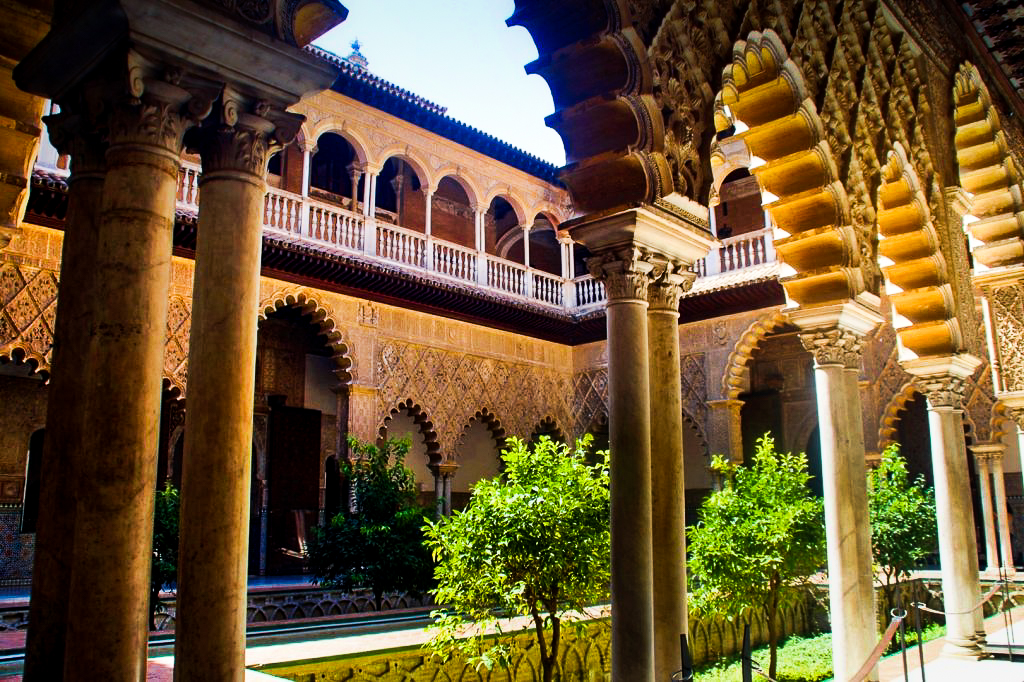

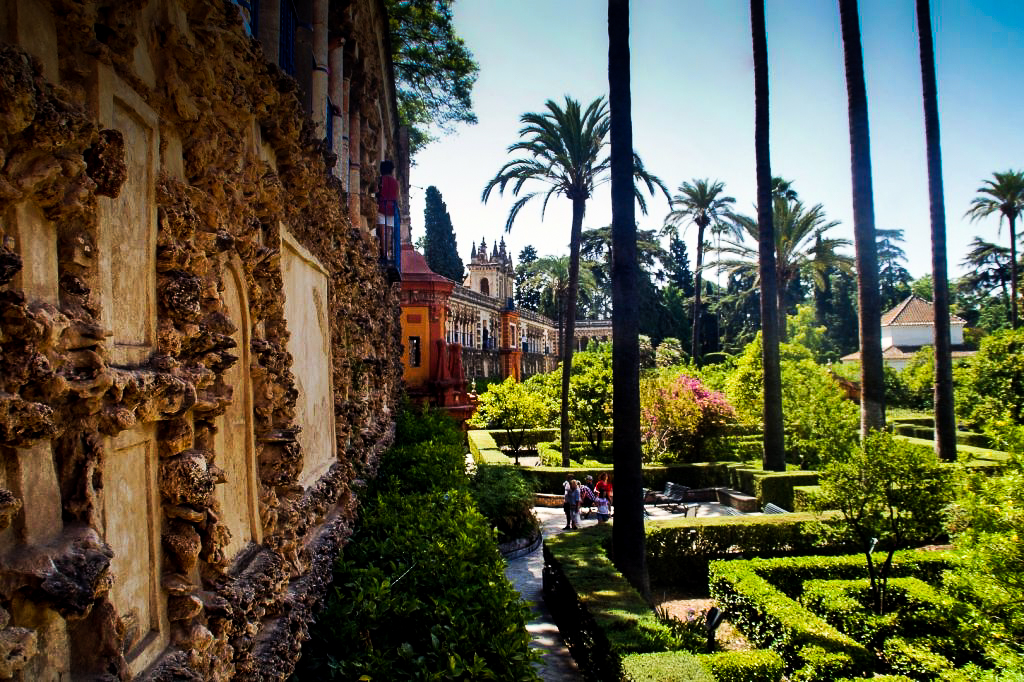
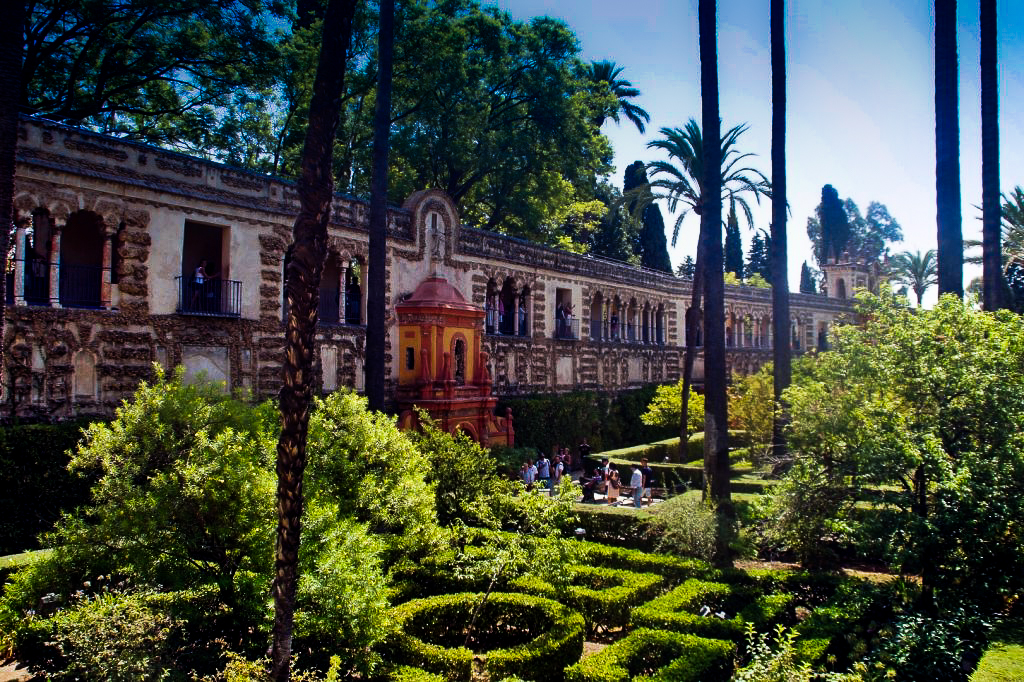
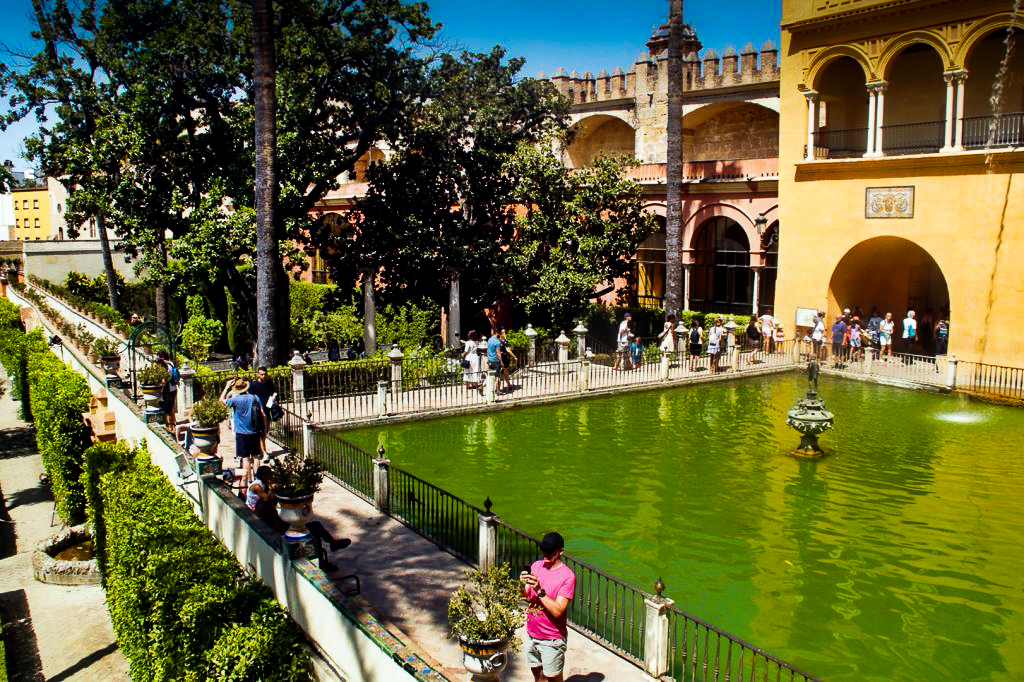

Catedral de Sevilla and La Giralda
Near the Alcázar stands the fourth-largest church in the world, the Cathedral of Sevilla, which has no less than 80 chapels! I joined another queue to enter the Roman Catholic cathedral and was immediately blown away by what I saw.
The exterior may be impressive, but it was the many beautiful stained glass windows and the impressive ceiling art that had me in awe. This beautiful place holds the remains of many royals as well as Christopher Columbus who started his journey to America from Sevilla.
Much like the Alcázar, the cathedral was built on the site of a former moorish mosque, the Almohad Mosque. The minaret, La Giralda, remains although it was turned into a bell tower and had a Renaissance-style crown added after the Christian conquest. Today, the tower is a popular tourist sight as the 100-meter high viewing platform offers great views over the city. And the best part of it – there are no stairs to climb! Instead, ramps that were designed for the Muezzin who led the call to prayer to ride up on his horse lead right to the top!

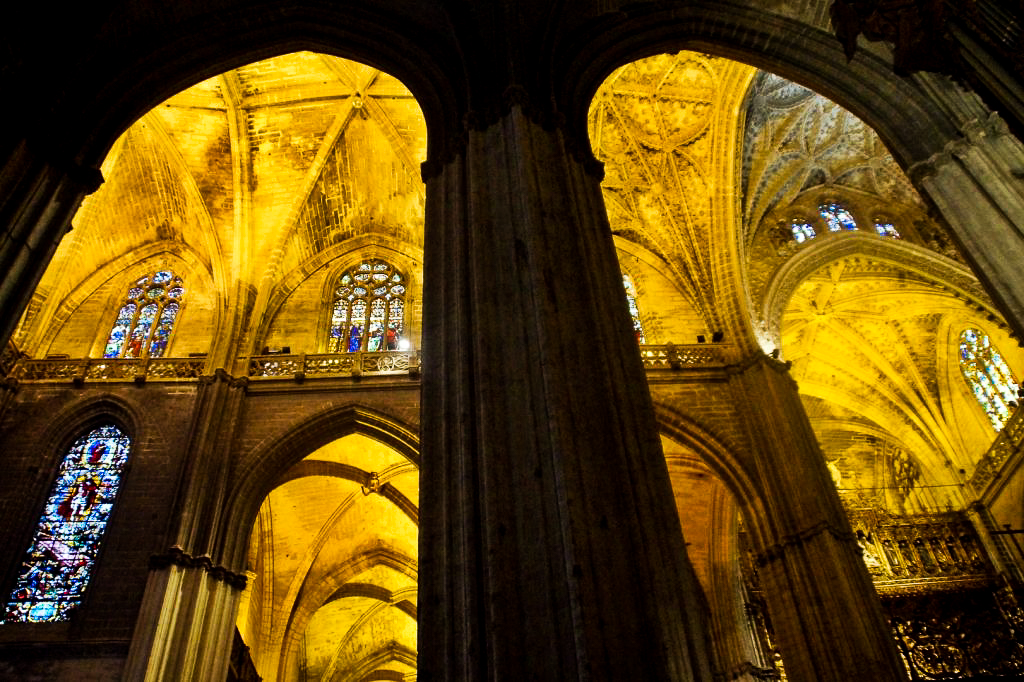





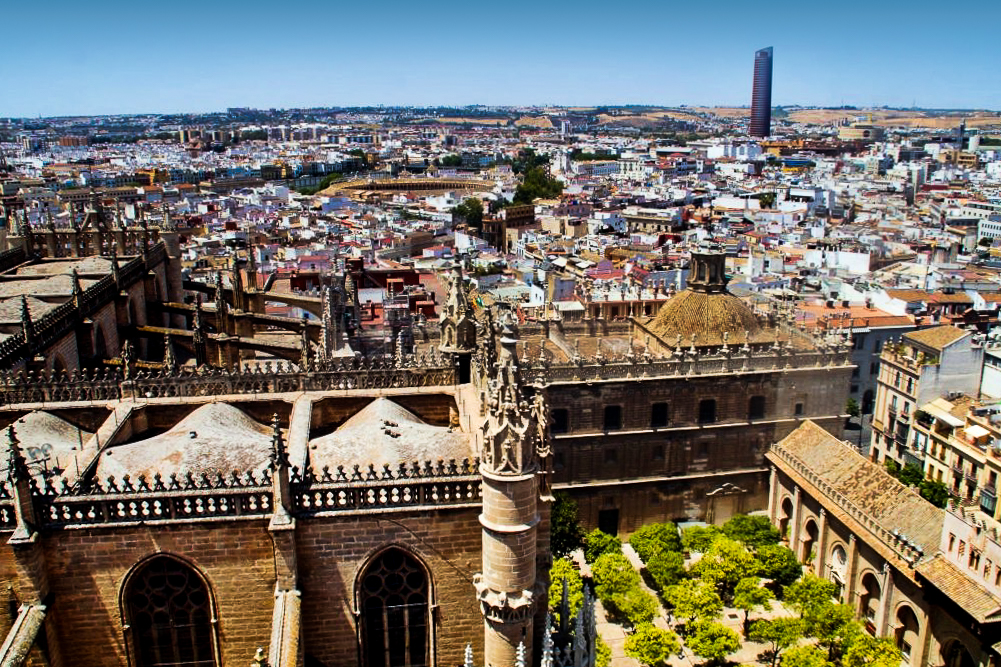
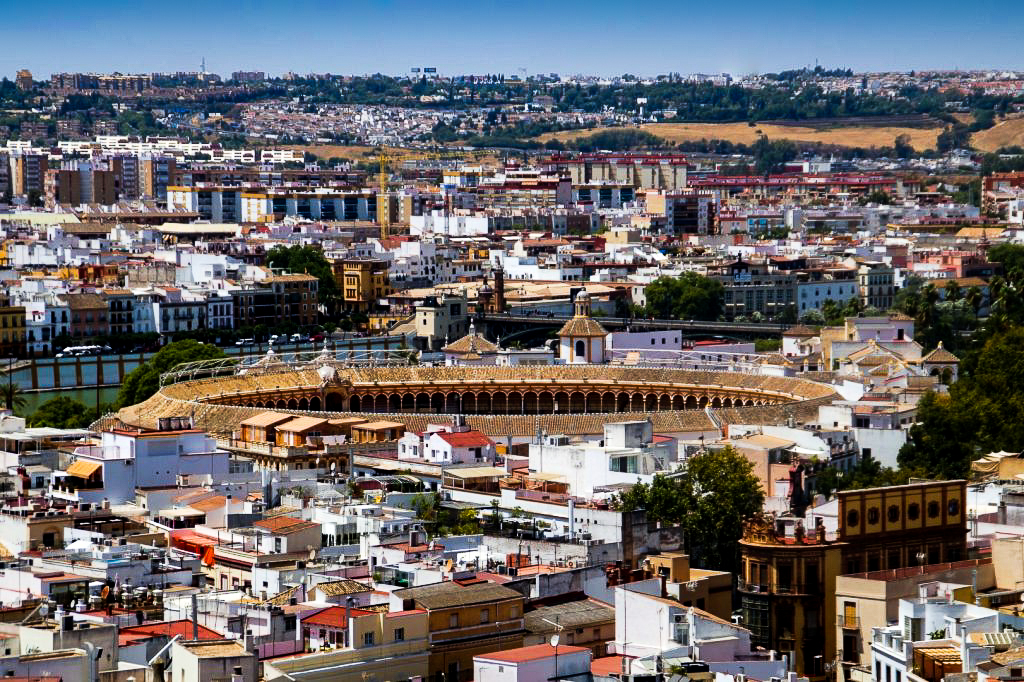

The Santa Cruz quarter
The cathedral sits in the heart of the Santa Cruz quarter, the former Jewish quarter. I enjoyed a wander through the narrow streets, most of which are impassable by cars making it a safe and pleasant experience.
Santa Cruz is a maze of narrow alleyways, quaint squares, beautiful facades and tapas restaurants. The quarter is the epitome of Andalucía in the summer, and it’s easy to get lost amongst all the beauty!


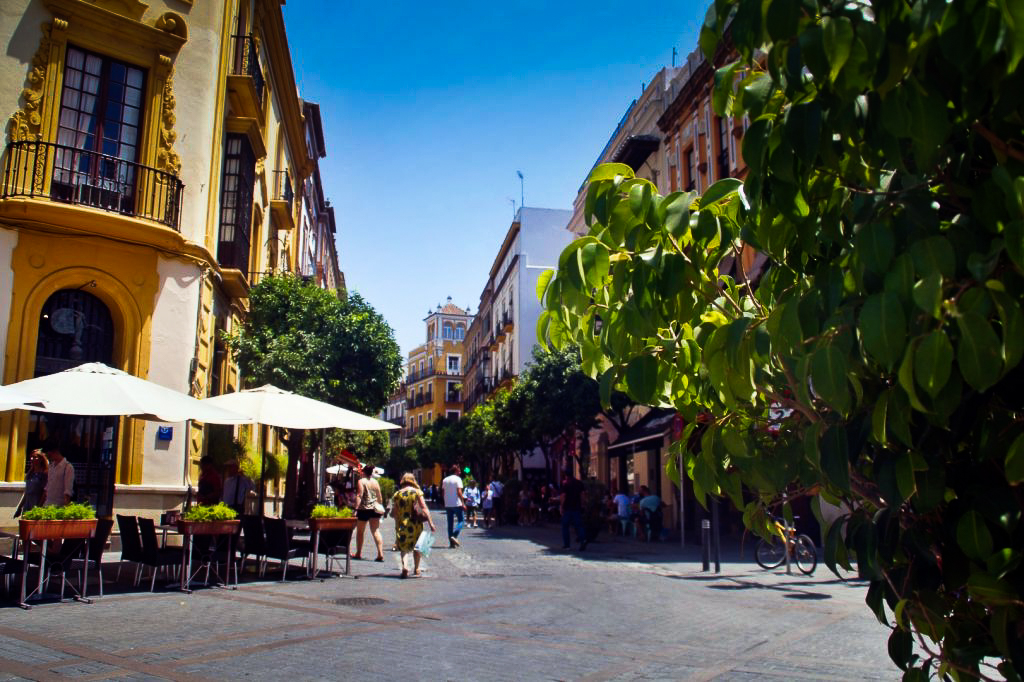
Along the river to Parque de Maria Luisa
After a morning full of touristic sights, I fancied a quiet walk by myself, so I headed down to the river Guadalquivir.
The river is of great importance as it’s the only navigable river in Spain, and it is connected with historical events that put Sevilla on the map. In 1519, Ferdinand Magellan started his journey around the world on that very river, a trip that saw the first ever circumnavigation of the earth. At this time, Sevilla was the mercantile centre of the western world and the river was the main maritime route for Atlantic traffic for over 200 years.
One of the most prominent landmarks along the river banks is the Torre del Oro, a defensive tower built in the 13th century by the Almohad Caliphate in order to control access to the city via the river.
My walk along the river took me past the tower and into the most beautiful park in the city, Parque de Maria Luisa. Spread out over 34 hectares, this park full of trees offers plenty of much-needed shade on a hot summer day. I, for one, spent ages cooling off from the hot July sun.




Plaza de España
One place not to be missed in Sevilla is Plaza de España, located in the outskirts of the park. The plaza was created around a semi-circle with a majestic curved palace and an artificial canal flowing through it.
Compared to the old town of Sevilla, this plaza is fairly new. It was built in 1928 for the Ibero-American Exposition of 1929 with a mix of elements of Baroque Revival, Renaissance Revival and Moorish Revival architecture, as well as beautifully coloured azulejo ceramics found across the square.
It’s a gorgeous setting and it’s no wonder it was chosen as a filming location in the AWESOME 2002 film Star Wars: Episode II – Attack of the Clones!

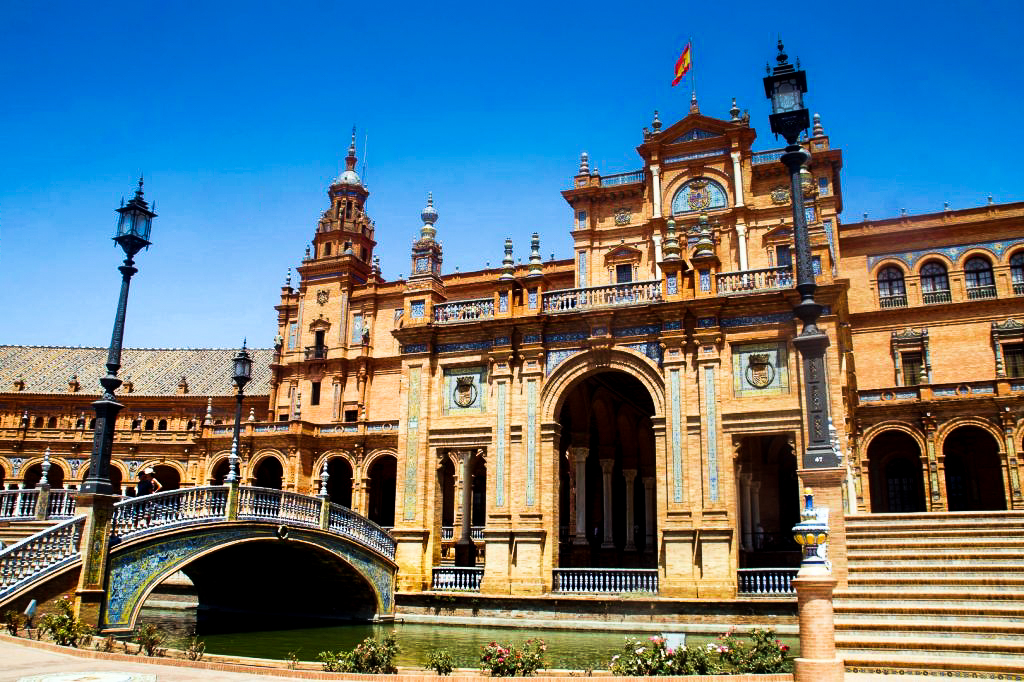



The Triana quarter
On the left bank of the river Guadalquivir, I discovered the vibrant quarter of Triana, an area full of Moorish and Baroque architecture. The quarter is famous for its local crafts shops selling azulejo ceramics as well as for flamenco, which is evident with the statue of a flamenco dancer found on Plaza de Altozano.
It was getting late when I arrived in Triana and I was getting hungry, so I was ecstatic to see a sign advertising a vegan burger for just 6 euros! I’d had such a hard time finding vegan food in Spain and had been living mostly off of bread. A vegan burger was a godsend!
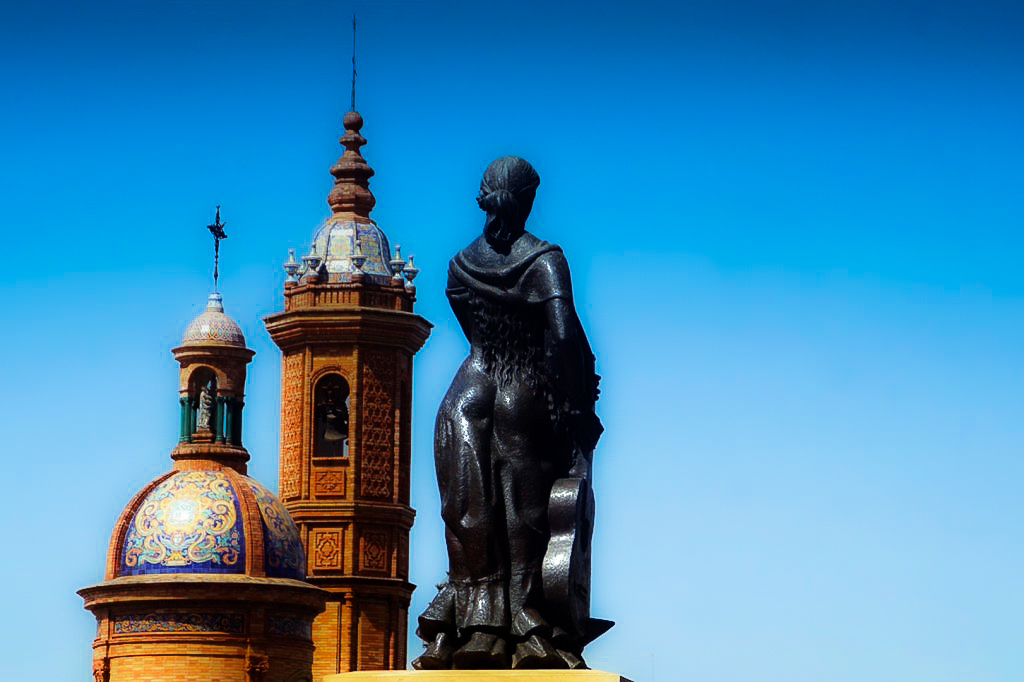
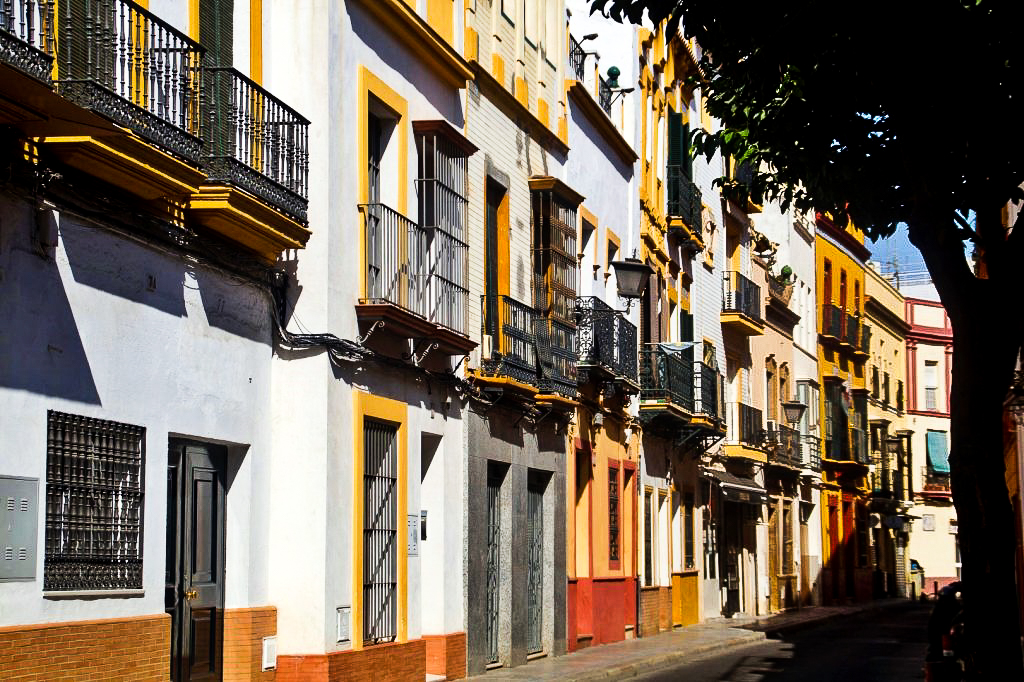
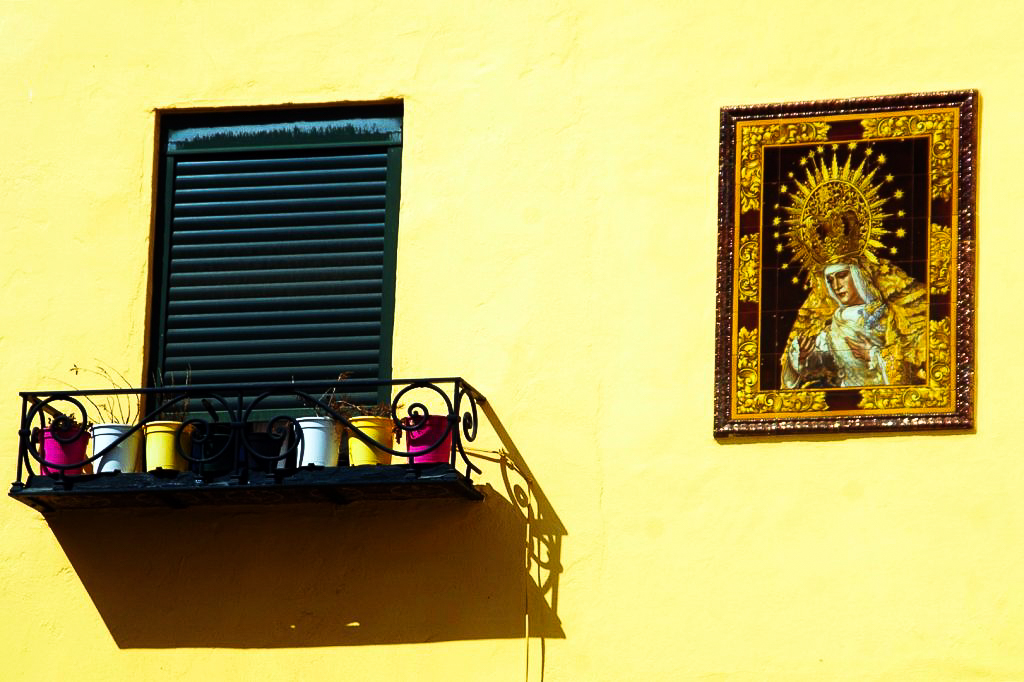
The vegan burger concluded my time in Sevilla as I headed to another exciting destination the following day.
Despite the overwhelming heat, I really enjoyed my days in Sevilla. But there is one thing about the city, Andalucía and Spain in general that I steered clear of during my time there – and that is bull fighting. This practice is a huge part of Spain’s culture and traditions, and Sevilla is home to one of the most popular bullrings in the country.
As much as I love learning about the cultures and traditions of the destinations I visit, bull fighting is a cruel practice that should be illegal in this day and age. We, as a human race, should know better than to exploit animals for our own pleasure. If you do find yourself in Sevilla – or any other Spanish city for that matter – do the poor bulls a favour and steer clear of the bullrings as well as the famous bull runs. Spain has plenty to offer that doesn’t involve cruelty to animals!
Leave a Comment
Pingback: Childhood dreams: Chasing my heroine in Ayamonte – Northtrotter on 03/09/2020
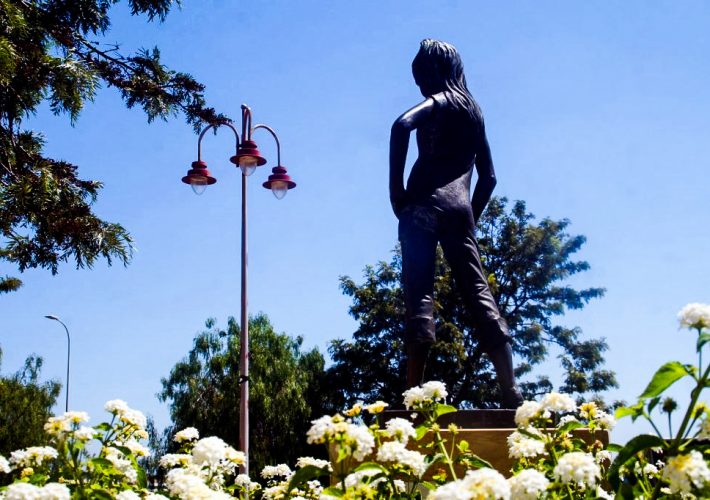
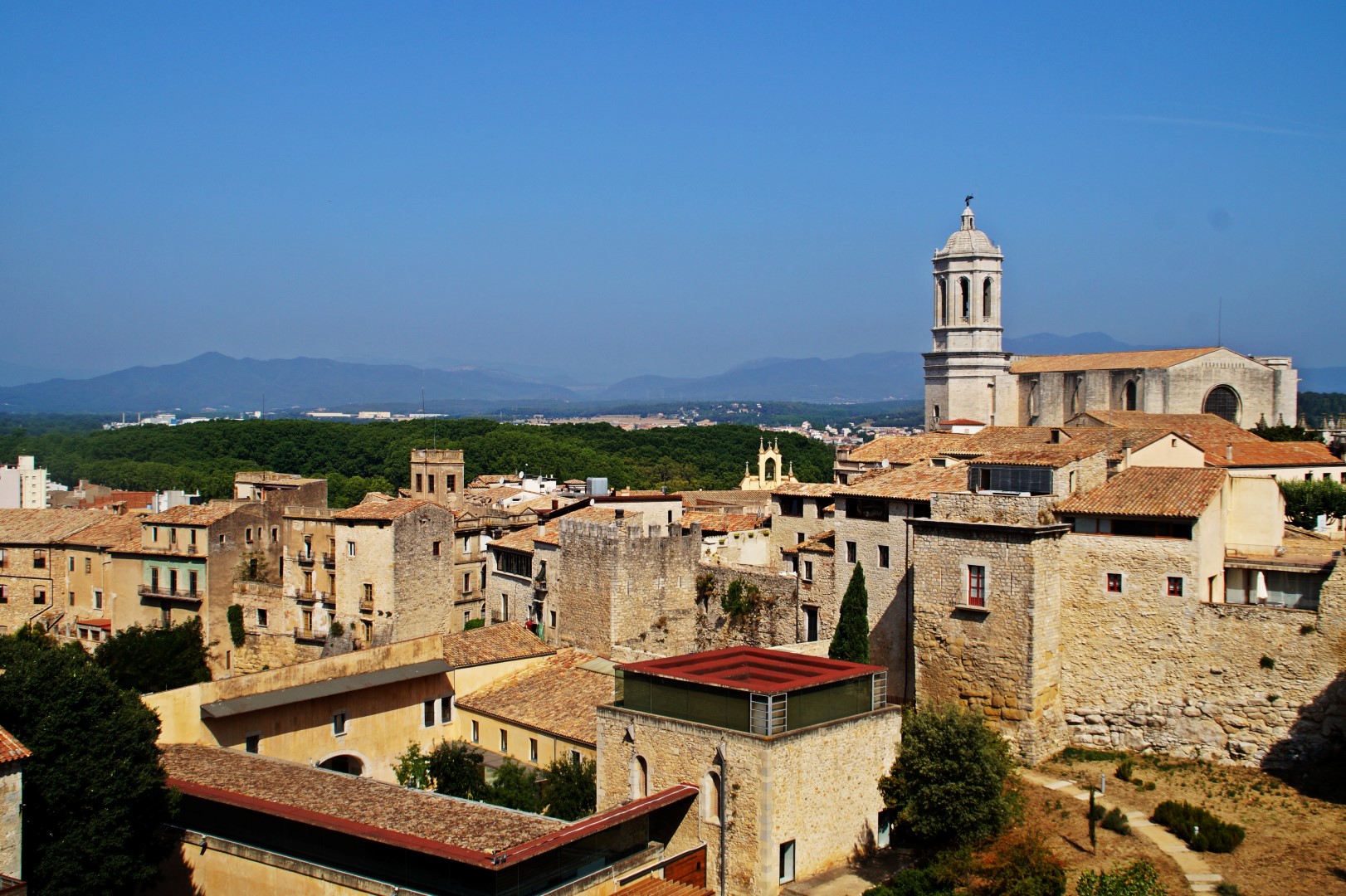
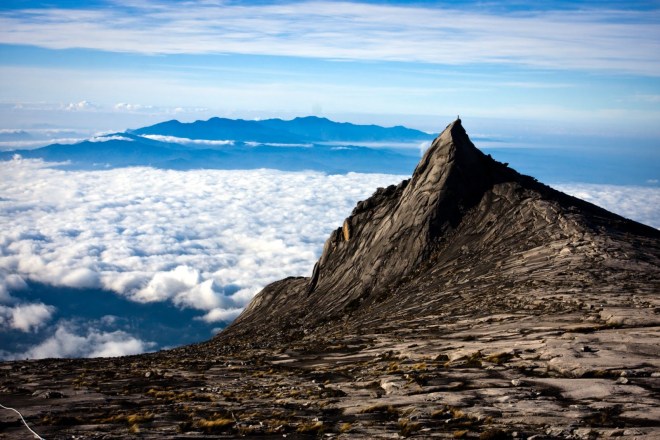

3 COMMENTS
Shaun Dorney
4 years agoFantastic read Melissa and absolutely magic photos!
Looks like we have added another place to our bucket list to visit when we can travel again !
Keep up the great blog entries!
You are a great travel reporter.
Melissa Cherry Villumsen
4 years agoThank you so much Shaun, you always write the nicest comments! 😀
Hope lockdown in Aus isn’t too hard on y’all!